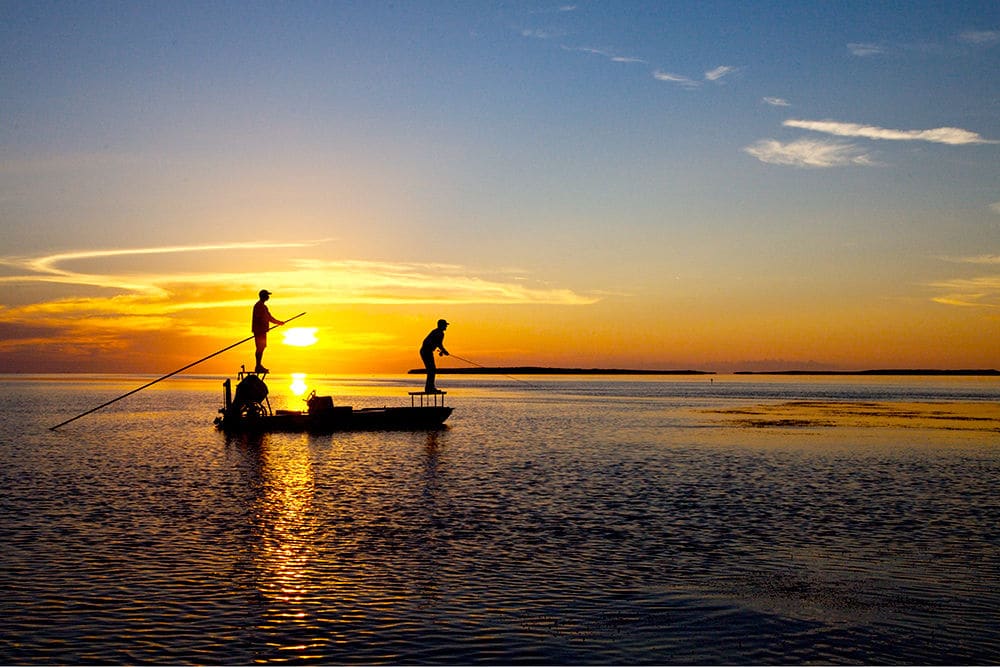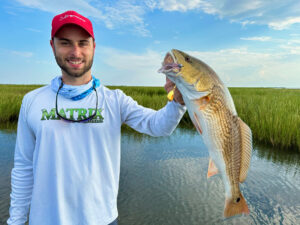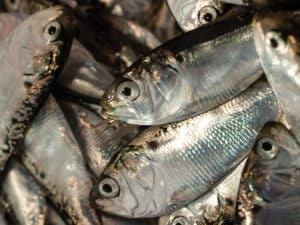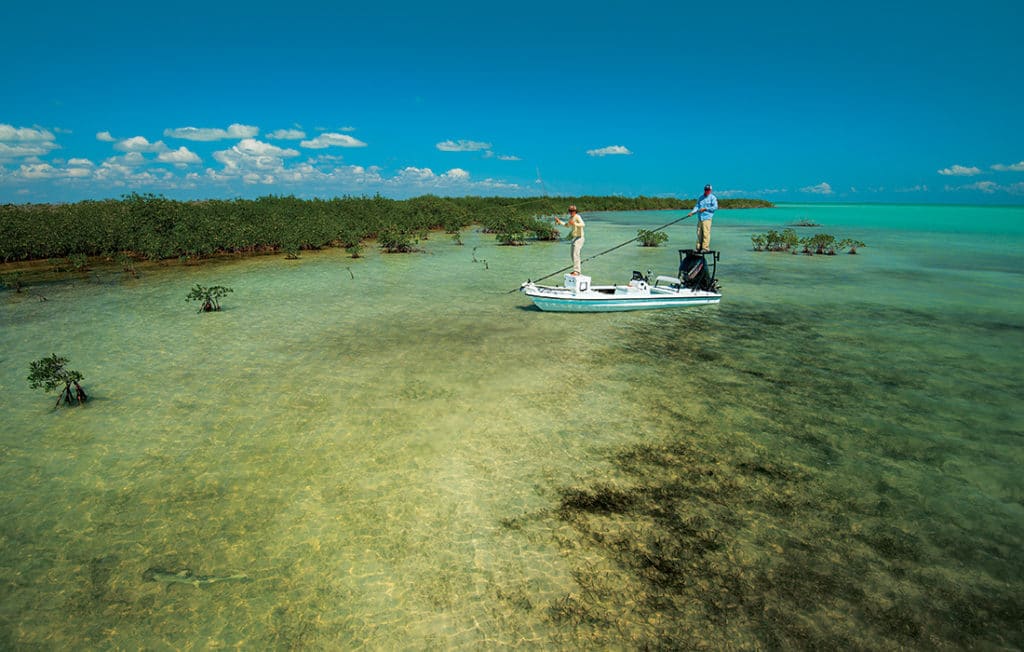
Flats anglers are natural hunters. Much in the same way that deer or hog hunters must identify animal signs, scents and habitat, skinny-water aficionados should understand how to read a flat and react to different variables they encounter. There are many different kinds of shallows, and fishermen are wise to treat them individually. Even the same flat can be fished in numerous ways depending on different conditions. I find it best to treat a flat like a kaleidoscope, with new patterns and elements emerging each trip. All inshore anglers must consider five essential variables when fishing the flats: wind and air conditions; the sun’s position; water clarity and temperature; the size, shape and composition of the flat; and existing signs of life.
Feel the Breeze?
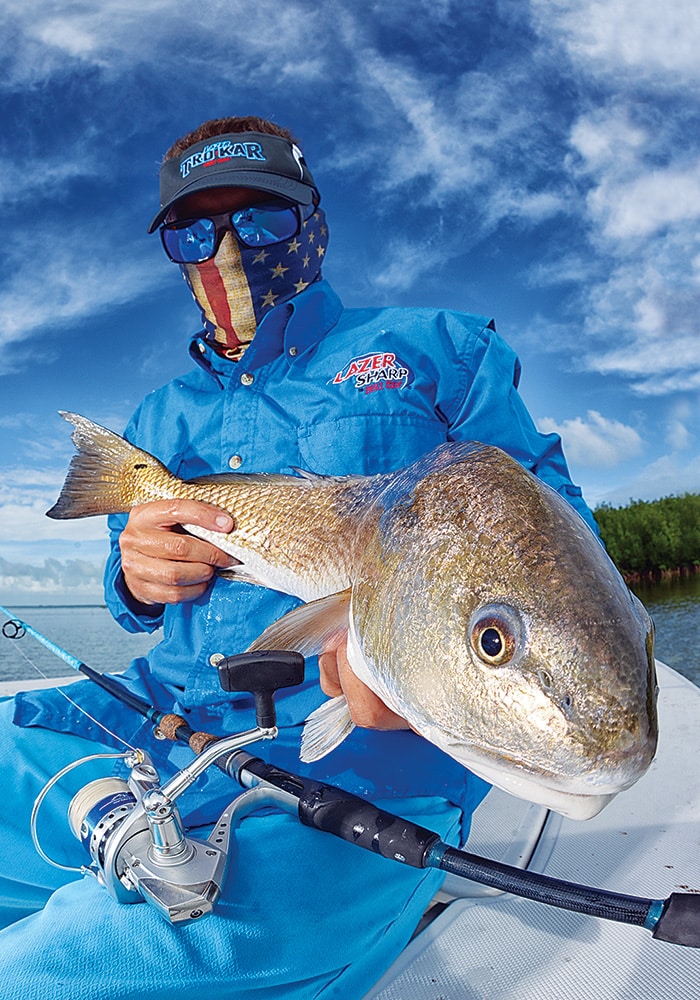
To be thorough, first check the barometric pressure in the area you expect to fish. Barometric pressure — easy to research at fishing-report or weather websites — is particularly relevant to flats anglers because high air pressure can keep water levels low, while low pressure allows water levels to rise. Additionally, a rapidly changing barometer triggers feeding or deters it, depending on the flats species and other variables. Local, on-the-water experiences help anglers understand how barometric pressure affects their favorite flats.
The next factor is air temperature. Air temps are extremely important because, along with direct sunlight, they determine the water temperature on a flat. Water temperature is a strong indicator of which species will be available, depending on their tolerance ranges. Air temps can change rapidly, especially during the approach of a cold front, but water temperatures take longer to react. Therefore one night of chilly weather will not drop a flat’s temperature as significantly as three nights. Conversely, it takes a few days of direct sunlight to get a chilly flat back to conditions that warm-water species prefer.
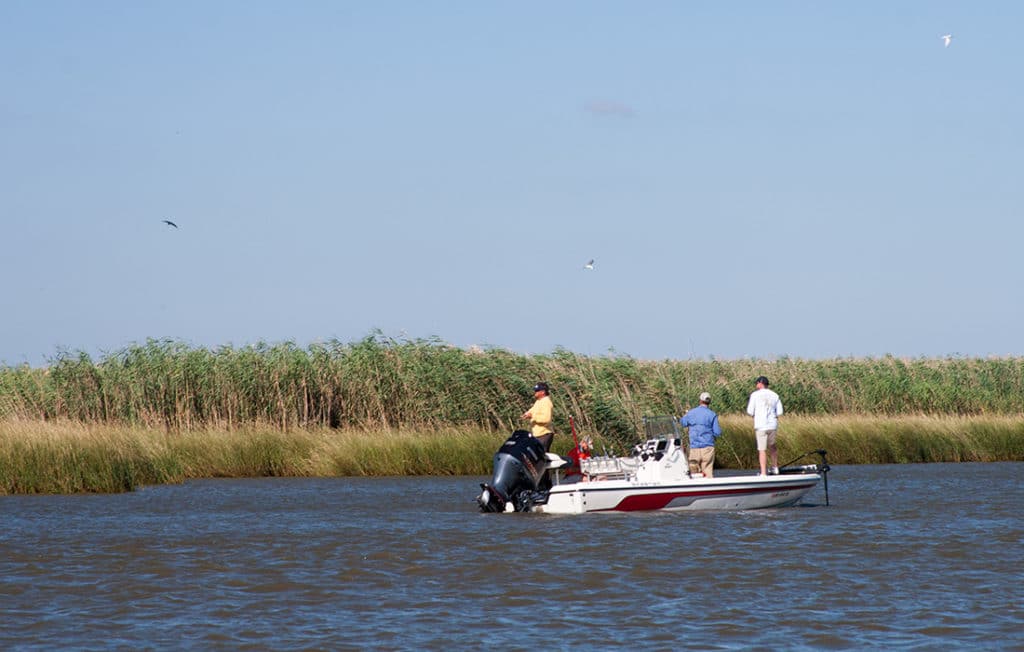
Another significant factor is wind direction and velocity. Flat, windless days can be great for casting topwater plugs for seatrout, as well as spotting rolling tarpon and tailing bonefish. However, flats fish in these conditions are also far more vigilant and spooky from sudden splashes and movements. Tailing bonefish feeding beneath flat-calm waters require extreme stealth and finesse. Increased winds create wavelets that help mask an angler’s presentation.
Wind direction becomes more relevant as its velocity grows. High winds can affect water level on the flat, keeping it high if the wind opposes a tide or low if the wind augments the tidal direction. The wind direction should therefore determine your poling strategy. If the wind velocity becomes excessive, waters often turn too turbid and dirty for good sight-fishing. This is especially true for flats with soft bottoms. Wind can be a flats fisherman’s friend, but not too much of it!
The Sun’s Position
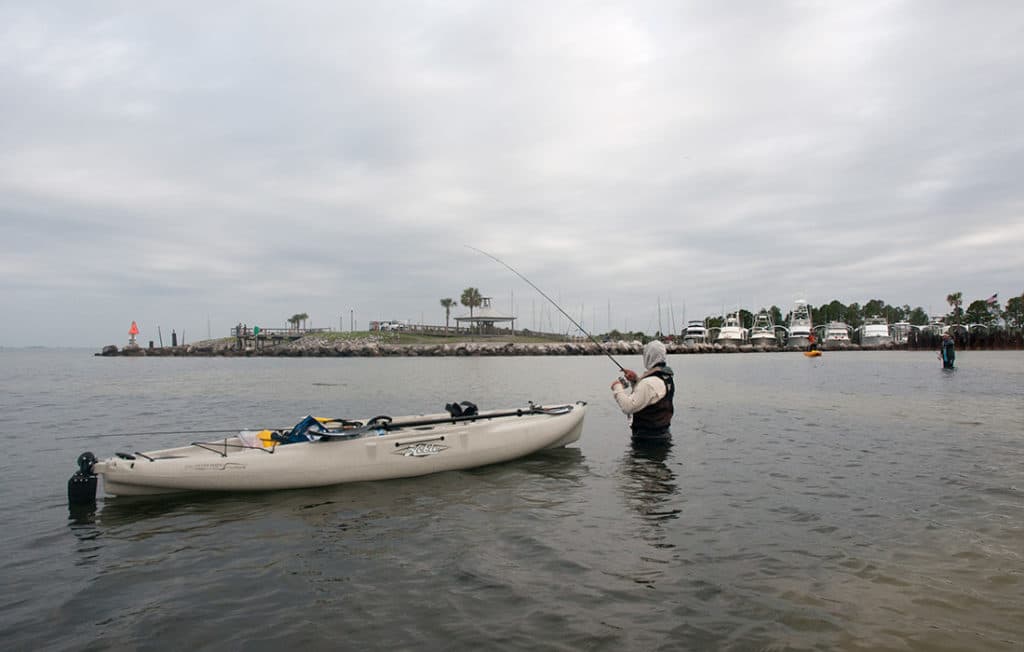
The second key variable is the amount of available light. Low-light conditions shading a flat favor a topwater bite for species like seatrout, snook and redfish. If I know I’ll have a cloudy day and I’m fishing for bonefish, I’ll fish the shallowest tides and flats so I can spot the bones tailing at the surface. Pick out redfish under the clouds by watching for pushes (surface wakes), tailing commotion or even backs protruding from the water.
When fishing somewhat deeper water where you need to see into the water to spot cruising fish, lots of overhead sunlight is ideal. Brightly lit waters are excellent for the bigger gamesters that need deeper flats, such as cruising permit or tarpon; after all, even a huge permit can’t tail up in 5 feet of water. If you have a patchwork sky, pole toward the blue portions because cloud reflections can make spotting cruising fish difficult. Though many would differ with my strategy, I actually prefer not to wear sunglasses when looking for tailing, rolling, crawling or pushing fish. Conversely, when I need to see into the water column for cruising fish, I don the finest polarized sunglasses I own. My favorite lens colors in shallow waters are vermilion and brown. On cloudy days I use yellow-tinted models.
Water Conditions
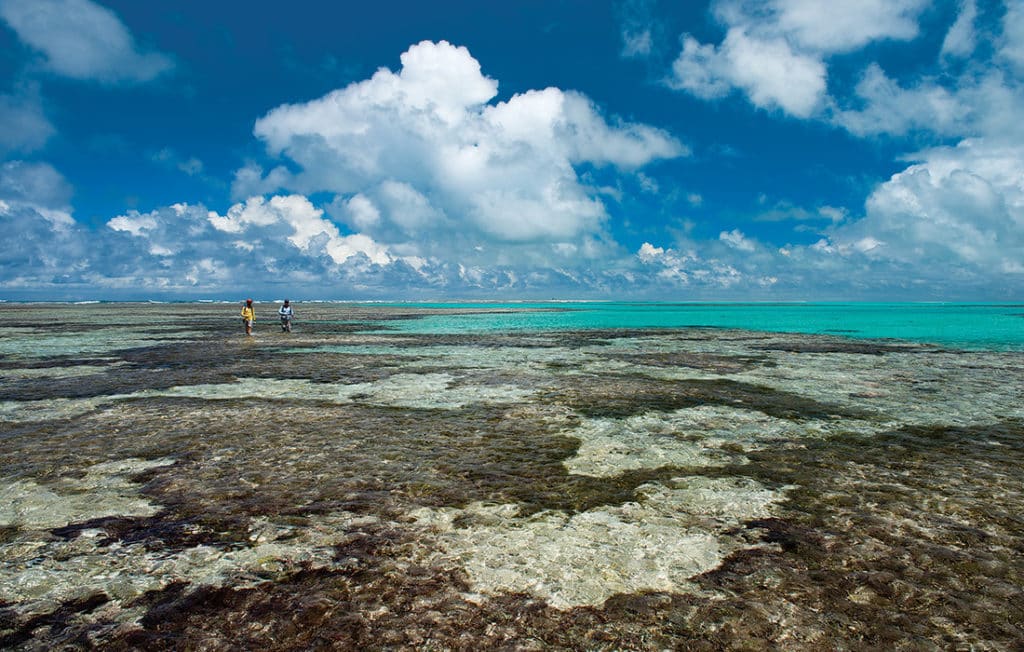
The third variable is the water itself. Water temperature is paramount; it determines which species will be present and feeding. Naturally, tropical flats fish such as snook, tarpon and permit prefer warmer temperatures. Bonefish can tolerate moderate water temperatures in the 70s, while mid- and south-Atlantic flats feature spotted seatrout, striped bass, redfish and black drum that tolerate colder water. Interestingly, barracuda remain on flats even in cold weather.
Deep water allows fish enough room to swim on the flats proper. I consider moon phases essential components and predictors of depth as well as current velocity. The new and full moons give anglers spring tides, which produce higher highs and lower lows. The quarter moon creates less tidal height change and has more-tepid currents. Always consult tidal charts for each day and the target fishing area, because tides are rarely evenly distributed throughout the day. Some areas have two tides a day, some have four, and some locations, like Charleston, South Carolina, have such large tidal swings that anglers risk stranding their boat if not careful.
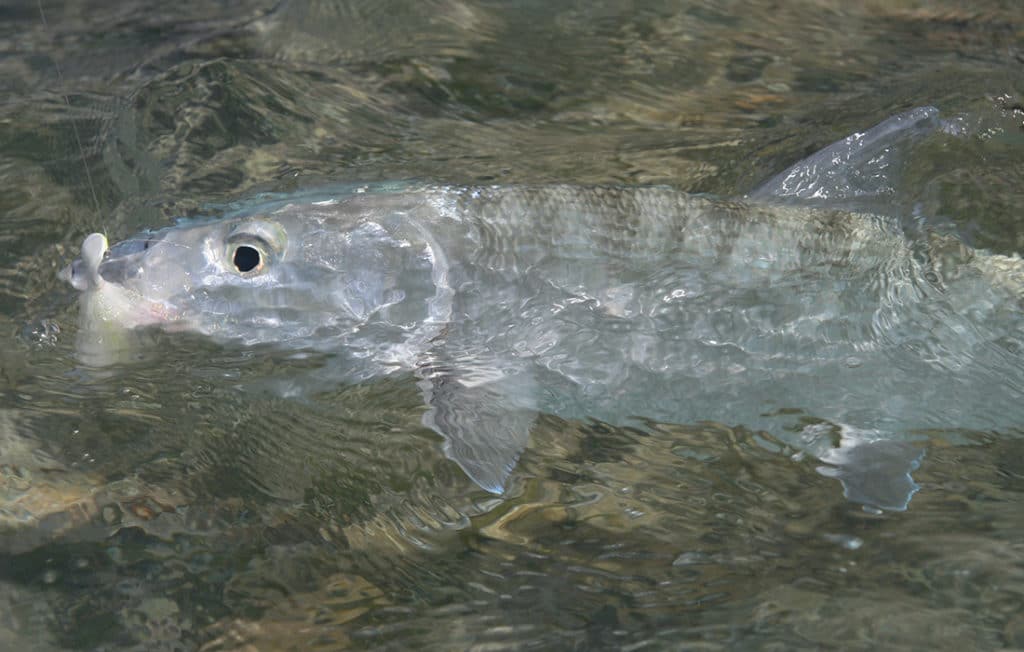
In Florida, the season of the year plays a role. Fall brings high flood tides that allow skiffs to chase redfish into shallow spartina grass flats, whereas winter in South Florida creates such low tides that flats are barren for miles at low tide, especially if the ebb tide is pushed by northerly winds. The next consideration with water movement is tide — in particular: direction, stage and velocity. Many books have been written on tide, but one overriding axiom is that each flat has its own species-specific productive tidal periods. Permit might move better on a particular flat during the last part of an incoming tide, while bonefish might move across the same flat on the mid to last part of the outgoing tide. I have always preferred fishing flats on the spring tides that produce the fastest currents and water movement, provoking agitation and disorientation of forage such as shrimp, crabs and clams.
Remember to bring a logbook and pen to take notes on particularly fishy conditions. Certain flats have contours that create unique meanders (winding currents) that trap bait. Places like this exist throughout Miami’s Biscayne Bay and produce highly predictable permit fishing on a tidal profile. If you see a regular current meander, make note of it because it will likely prove extremely productive. The last aspect of water assessment is water clarity. If you are fishing dark-water Everglades flats or other turbid shallows, blind-cast or spot-cast the skinny water with topwater plugs, spoons or other search lures, such as spinner baits. These methods can produce redfish, snook, seatrout and other species.
Flats Composition
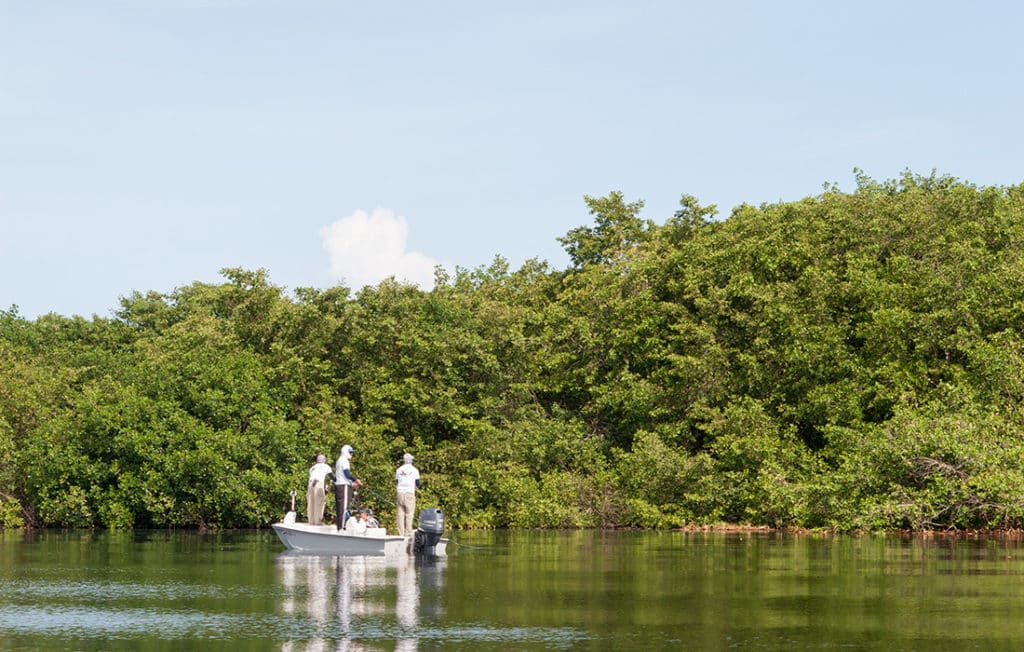
Other strategic variables to consider when dissecting a flat are its size, shape and bottom composition. The size, shape and contours of a flat are crucial factors for poling strategies as well as predicting the movement of certain flats species. Both tarpon and bonefish are notable contour feeders. Bottom compositions that feature sandy potholes in the midst of grassy expanses can be honey holes for big trout and snook. Mangrove islands in the middle of flats are usually circumscribed by deeper moats that harbor snook and tarpon. In addition, muddy bottoms can retain heat better than sand can, and therefore become fish-friendly throughout a warming winter day.
Signs of Life
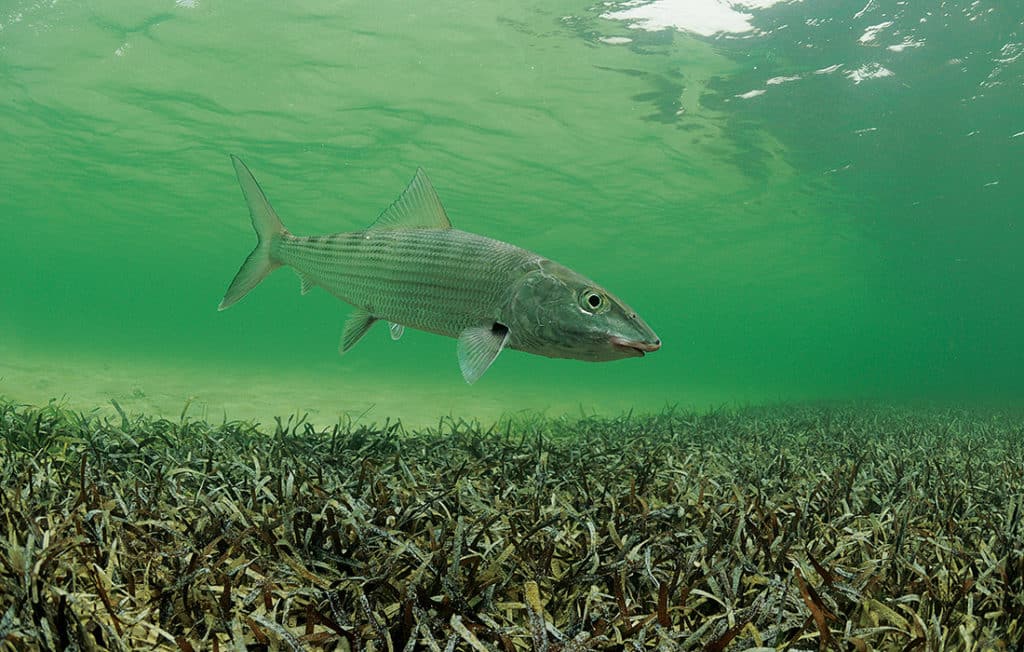
The final essential variable is signs of life. In particular, pay attention to forage and predatory species. If you find a flat with wading birds, rays and sharks, this is prime feeding activity indicating the presence of baits such as minnows and shrimp. Clues to fish-feeding activity can take many forms. It might be the presence of spraying glass minnows: a sign that seatrout, Spanish mackerel and other game fish are active. In Los Roques, Venezuela, spraying minnows usually mean feeding bonefish. Schools of finger mullet on a flat regularly attract redfish, snook, seatrout and tarpon.
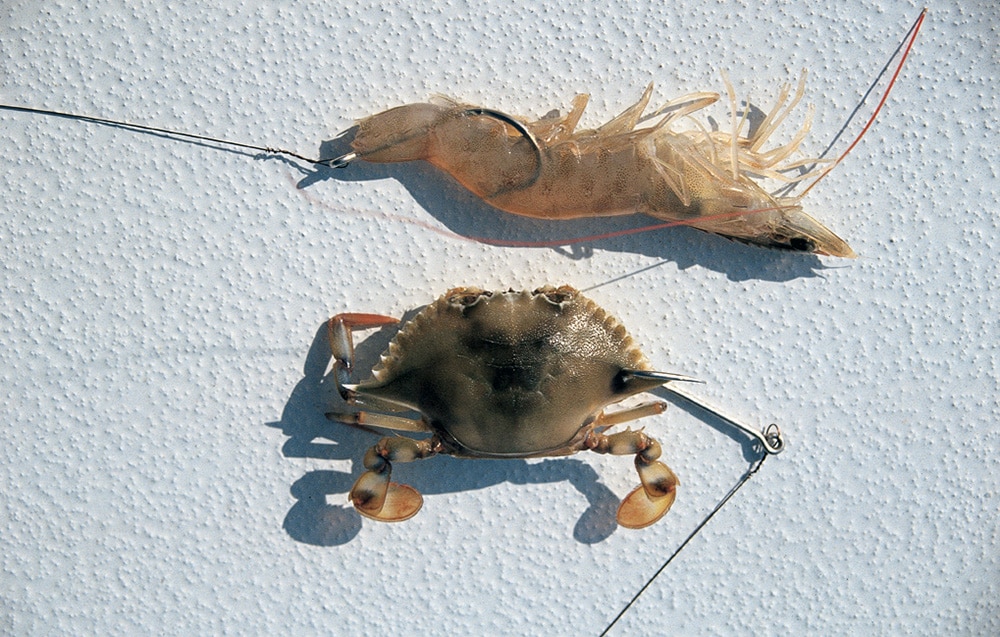
Then there’s the crunchy food. Savvy flats-fishers know the presence of live crabs in the water column and on the seafloor attract redfish, bonefish, tarpon and permit. But don’t overlook stationary food such as sea urchins, clams and sea worms. My personal-record permit (23 pounds on 4-pound line) had a gut loaded with black sea urchins. Groups of wading birds help pinpoint baitfish or shrimp concentrations. On a recent flats trip to Flamingo, Florida, the birds tipped us off to a large school of small tarpon gulping shrimp.
Lastly, watch the flats closely for signal species, as I call them. Stingrays and trunkfish often hunt for the same food as bonefish, redfish and permit. And if lots of sharks and barracuda are present, these species are targeting the very same flats fish you’re hunting.
Extreme Tides
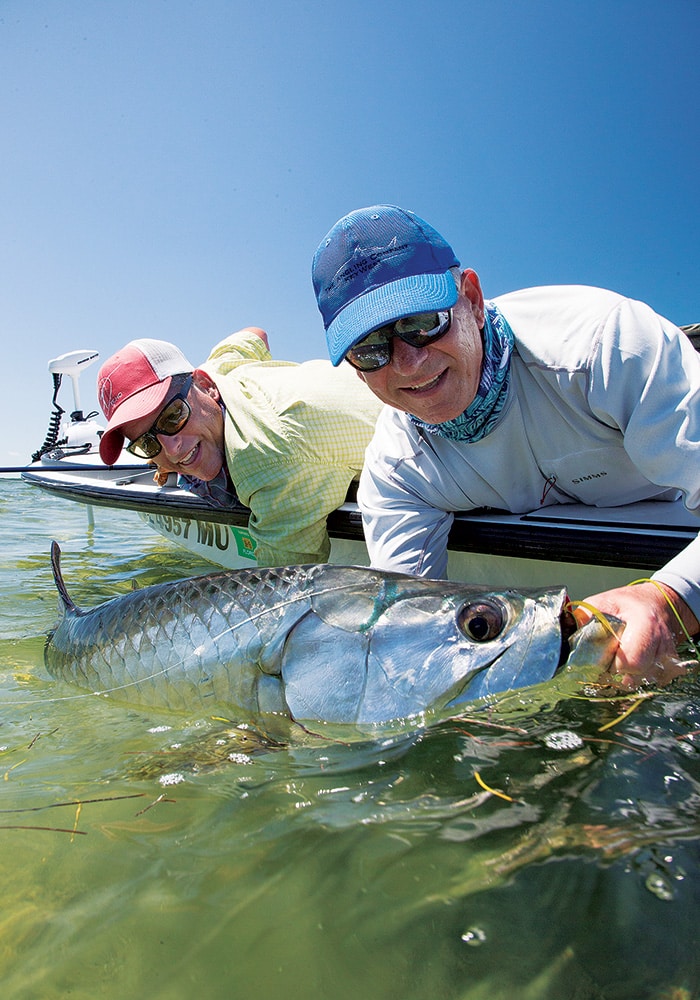
Severely low or high tides on the flats should be treated as fishing opportunities rather than daunting limitations. The best results come when flats anglers have done solid advance planning for an upcoming extreme tide. Pair the intended target species to the location and water level to figure out where the fish will stage.
Decidedly low water often concentrates fish. Winters in Florida feature seasonal low tides. If this occurs in the presence of a north wind and an outgoing spring tide, normally water-covered flats can be dry for miles. In these conditions, it is not unusual for certain flats fish like seatrout to temporarily hunker down in flats potholes that retain enough water for refuge. Enterprising anglers who have prior knowledge of these potholes or channels can enjoy astonishing action.
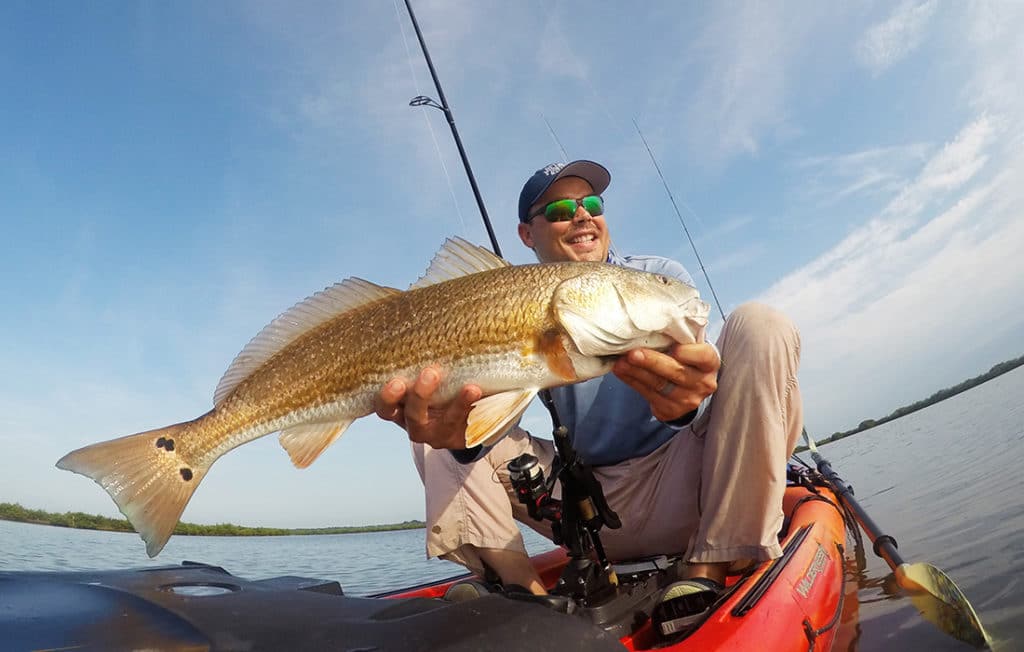
The challenge is reaching these small havens. The trek might take a combination of long, careful wading and paddling a stand-up paddleboard (SUP). In years past, I have taken almost two-dozen trout from one particularly large pothole on Florida’s west coast. Fortunately for me, this extreme low-tide haven is only a 50-yard walk over fairly hard bottom.
In the Sunshine State, the fall season brings notably high tides. Once again, if this coincides with onshore winds and a high spring tide, water can flood dry shorelines or other places skiff anglers can’t normally explore. This is the time of year to follow the fish to the secluded places that never have access. A classic example is the flood-tide fishing for redfish in the shallow grass fields of north Florida and nearby coastal states of Georgia and South Carolina. When I fish bonefish in Miami in these conditions, I pole my skiff to within 3 feet of the beaches.
Examine, Study, Record
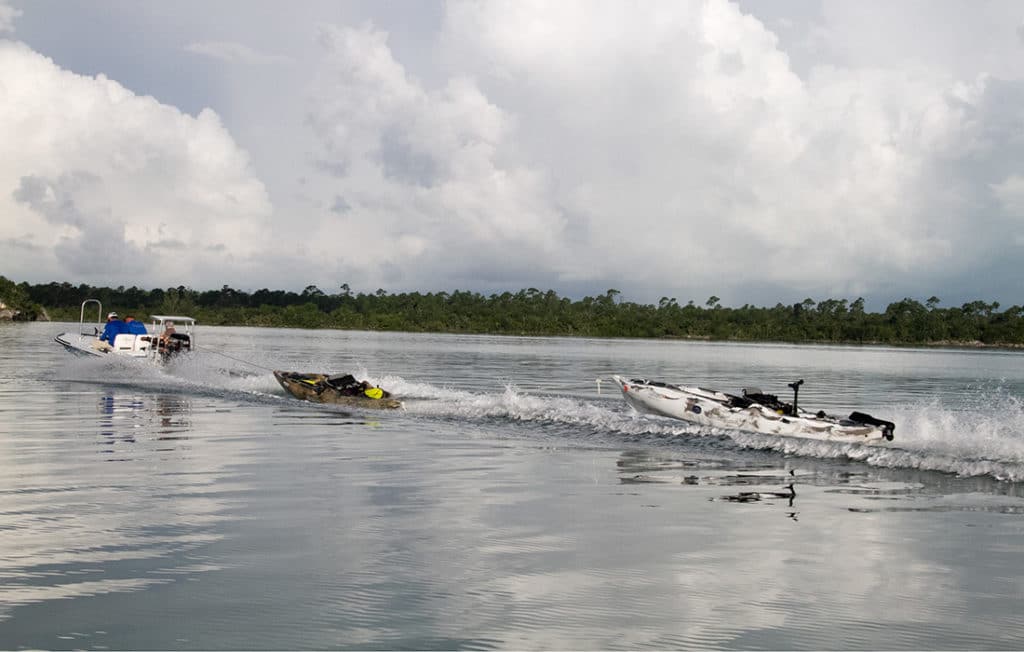
Traditionally, a good way to learn the physical characteristics of a flat is to put down the fishing rod and explore the expanse you want to learn. An ideal time to do this is during the low-tide phases beneath a strong overhead sun. Obviously, you should have enough water under you that you won’t run aground or risk stranding.
Vessels such as kayaks and SUPs can be used for exploratory expeditions when the waters are too shallow for a skiff. I prefer putting an SUP on my skiff for my prospecting trips because it is far sleeker and less cumbersome than a kayak. I also like the SUP advantage of standing on my exploration trips because more height leads to better visibility. Carry your waterproofed logbook and make copious notes. I personally love fishing sandy beach flats for bonefish in Belize and snook at Sanibel Island. Beach flats fish best during the high tide. But you want to explore the area during a midday low tide to spot shallow gullies and ruts that fish use for travel and feeding. Try to do this in your bare feet, if possible. You will be amazed by how the soles of your feet feel the smallest contours that bonefish or snook utilize as highways when the tide rises later.
Modern Technology Comes To Our Aid
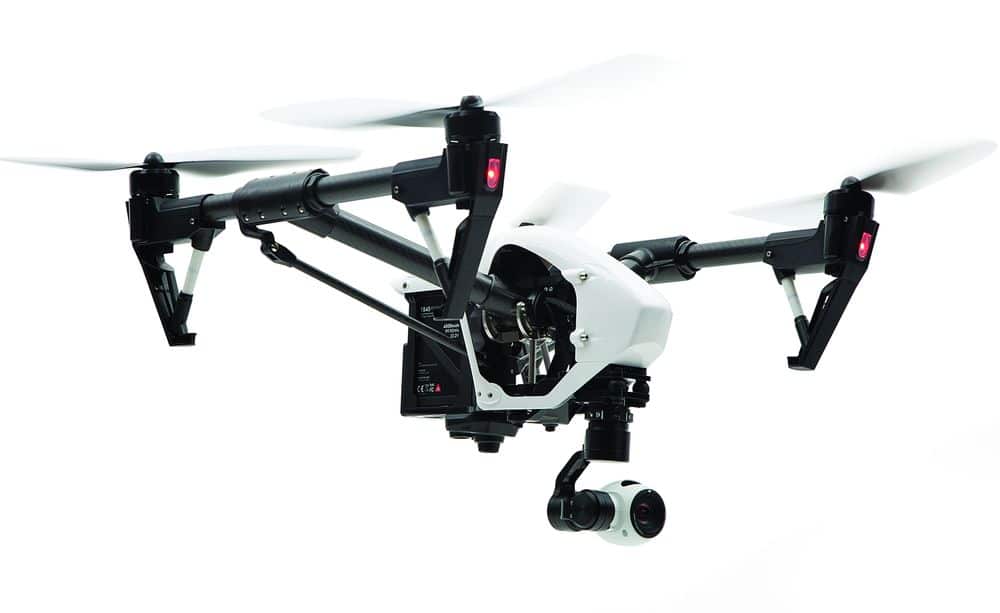
Many years ago in Islamorada and Florida Bay, some fishing guides hired small-plane operators to search for strings and daisy chains of tarpon. Though the practice of using spotting planes is no longer viable, we can be grateful for two newer aids that gaze down from aloft. The first is Google Earth, the Web-based visual-mapping program that offers some extremely detailed views of flats, often showing shallows, drop-offs and channels in considerable detail. Some extremely remote regions might not yet be photographed, but many have been, much to the benefit of the world-traveling do-it-yourself flats-fisherman.
The second and newest development — camera-equipped drones — can be operated from a hand console with a display screen. The best part is that these devices take HD videos and stills of the entire area you plan to explore. The results can be reviewed again and again. The drones fly at various heights for your exploratory needs. Before operating the drone, first check to see whether there are any laws or regulations that prohibit its use. Also practice with the drone on land before taking it on the boat.
About the Author: Jan S. Maizler is a veteran shallow-water light-tackle journalist. He has fished flats all over the world. His latest book is Fishing for Spotted Seatrout, published by University Press of Florida.
Check out other flats fishing content
Discover some of the best shallow-water fishing locations on the planet during the best months to visit them. Click on the image below to see them.
